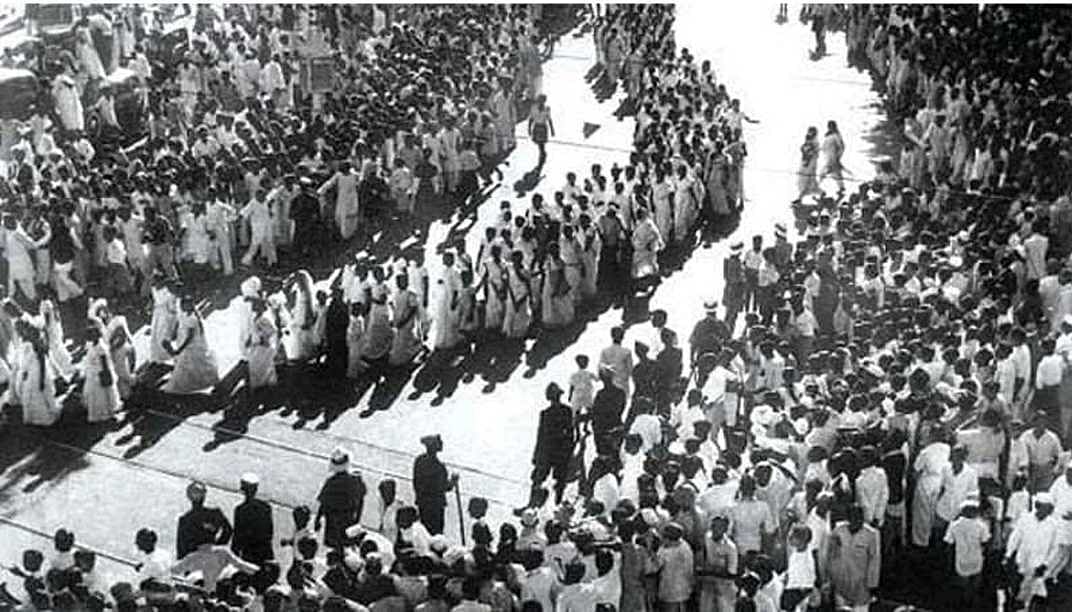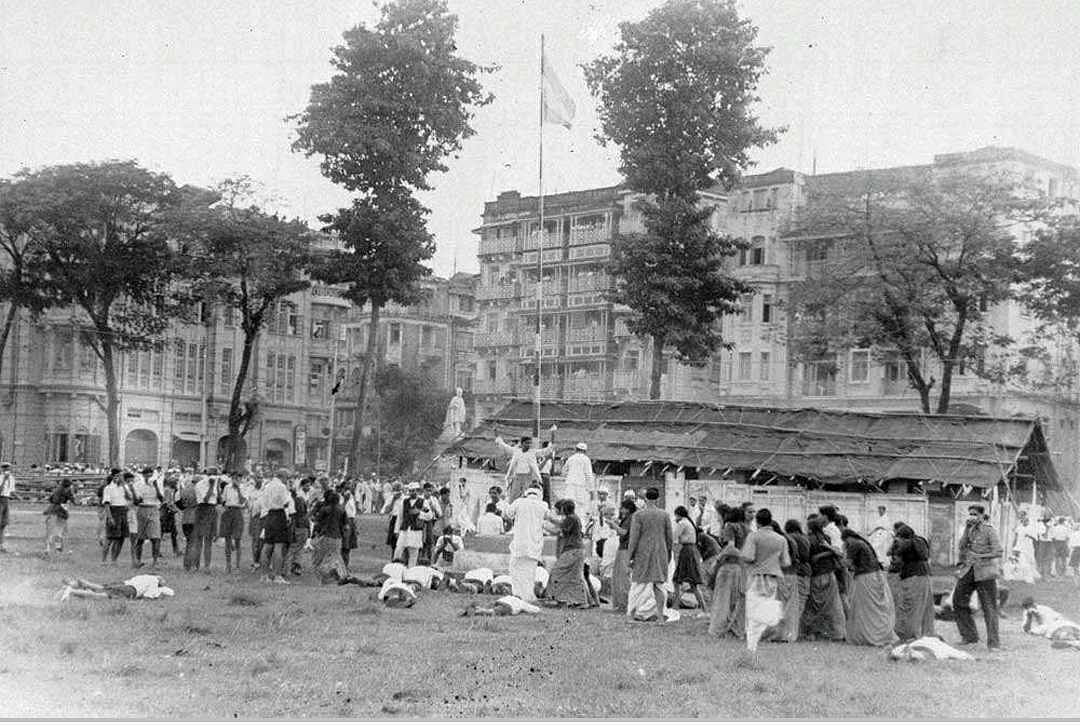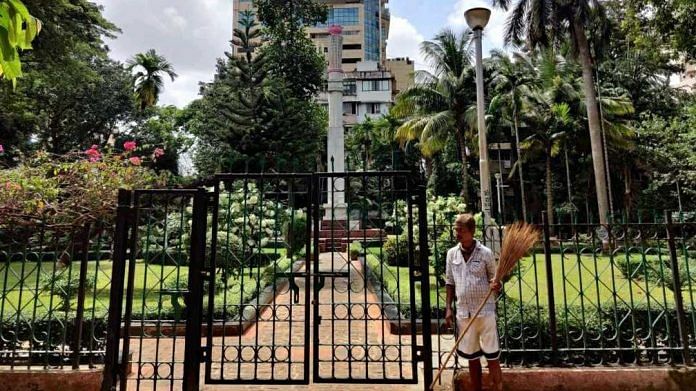The August Kranti Maidan in Mumbai is getting a grand Rs 32 crore makeover ahead of India’s 75th Independence Day and in commemoration of Quit India Movement’s 80th anniversary. But first, the city corporation has to move toilet blocks, hoardings and parked cars out of the way.
Only then can the birth of Quit India Movement in this historical park be brought back to life with a planned memorial wall, freedom trail, and restoration work.
It was on 8 August 1942 at this very Maidan that M.K. Gandhi made the call for the British to quit India. His words—Do or Die. We shall either free India or die in the attempt—resounded across the country.
And now, 80 years later, August Kranti—or Gowalia Tank Maidan as it was then called—is set to get a facelift. “Let history run through the plan,” says Varsha Muley, head of department, history, SIES College of Arts, Science & Commerce. “Every nook and corner of Mumbai has history. This needs to be preserved.”
The project includes restoration work inside the Maidan, a memorial wall for freedom fighters and beautification around the periphery. The Brihanmumbai Municipal Corporation (BMC) has also planned a 2-kilometre-long pathway or ‘freedom trail’ that will originate from outside the Maidan and end at Girgaon Chowpatty.
Heavy rains, however, are derailing the schedule. “We wanted to complete 50% of the restoration work by August 15, but got stuck due to rains. But we will complete the outside footpath and entry by August 15,” said Prashant Gaikwad, assistant municipal commissioner, BMC.
Also read: How does each decade of independent India look through the designer’s eye? This group shows
Reconnect with history
Such initiatives, say historians, will help a new generation reacquaint itself with Mumbai’s history.
On 8 August 1942, more than 40,000 people had gathered at the Maidan to hear Gandhi’s speech. The word ‘gowalia’ comes from the Marathi/Gujarati word for cows. The owners would bring their cows to this tank for bathing. The tank still exists below the ground. The Maidan was built over this tank, experts say.

Its name was changed to August Kranti Maidan to mark the month Quit India Movement started. “When the call for Quit India was given, common people responded religiously,” said Muley. The movement saw the participation of many women and students, which was a big deal, she added.
A flag salutation where Jawaharlal Nehru was to give a speech was scheduled at the Maidan for 9 August. Gandhi was to speak at a public meeting at Shivaji Park that evening. However, in the wee hours of 9 August, many key leaders of the INC including Nehru and Gandhi were arrested.
“When all the top leaders were under arrest, young people and women contributed a lot and their contribution needs to be highlighted,” says Bharat Gothoskar, city chronicler and founder of Khakhi Tours, which officers heritage walks in Mumbai.

People like Aruna Asaf Ali, Usha Mehta and others stepped up to keep the momentum going. They ran an underground radio. In the highly charged atmosphere, Ali unfurled the tricolour braving a lathi charge.
The task they undertook need not be relegated to classrooms and libraries, says Muley. “This [Quit India Movement] is an important event which started from here [August Kranti Maidan] so this needs to be highlighted either through a film or a sound-and-light show. There should be some anecdotes, text in English and Marathi languages. The scene should be recreated, not just pre-Independence but even post-independence.”
Also read: Aruna Asaf Ali, a fiercely independent freedom fighter who defied Mahatma Gandhi
History everywhere
A stone’s throw from the Maidan is Mani Bhawan—Gandhi’s official residence. About half a kilometre away is the Gokuldas Tejpal house where the Indian National Congress was established in December 1885.
Girgaon Chowpatty, where the proposed freedom trail culminates, is where Lokmanya Tilak was cremated. Even Mumbai’s Dandi march happened at Girgaon Chowpatty. All this will be included in the trail.
“Mumbai has made a huge contribution to the Independence struggle like Khilafat movement or Quit India Movement. August Kranti, for multiple years, was a fulcrum,” said Gothoskar.
Gothoskar has been asked by the BMC to come on board for the project. “We know more about London or Paris than our own backyard. We are trying to make people realise that there is so much more around us.”
The plan
Since Independence, August Kranti has been used as a recreational ground.
According to Pankaj Joshi, architect with urban centre for Mumbai and consultant roped in by the BMC, the Maidan was divided in 1972. Today, the ground has six parts, including a playground for children, seating area for older citizens, a memorial and a pillar with a lotus atop erected in 1970.
The project will be taken up in two phases. In the first, which will focus on the restoration of the Maidan, the periphery will be beautified and the divisions removed to make the ground whole again, says Gaikwad. This will be done at a cost of Rs 14 crore. The second phase (Rs 18 crore) will be the freedom trail.
In the first phase, the footpath outside the perimeter of the ground will also be re-engineered using basalt stone to restore the vintage look of the garden. The inside walkway will be of mud macadam, the officials say.
Gaikwad said the BMC is looking at improving the existing drainage network and upgrade the stormwater drains in this area, considering it is a low-lying zone.
Also read: No, Nehru didn’t hoist India’s first tricolour at Red Fort. And British flag wasn’t lowered
The freedom wall
The second phase will include creating the freedom trail pathway. For this, the BMC has roped in history professors from Mumbai University as the pathway will have information kiosks and murals about the Quit India Movement.
The freedom wall would also be put up inside the Maidan with information about the freedom struggle and people involved in it.
This pathway would be about 3 km long and will cover some of the historic locations like Mani Bhavan, which was Gandhi’s abode in Mumbai for 17 years, and the Lokmanya Tilak Smarak at the Chowpatty.
Joshi said that this freedom trail will be in line with the internationally acclaimed freedom trail in Boston.
Across the trail, there will be history panels and during the Independence Day week, flags would be put up across the trail.
“This will be an open space for Mumbaikars throughout the year except for that one week of August 8-15 when it will have a freedom week and even the trail will be open all year long,” said Joshi.
Gaikwad said the BMC is now looking to finish a majority of the restoration work by 26 January 2023 and within 18 months from now, the work of the freedom trail would also be completed.
In the decades that Mumbai emerged as India’s commercial heart gilded by the sheen of Bollywood, its role in the struggle for Independence fell through the cracks. Such initiatives will keep its history alive.
(Edited by Prashant)






